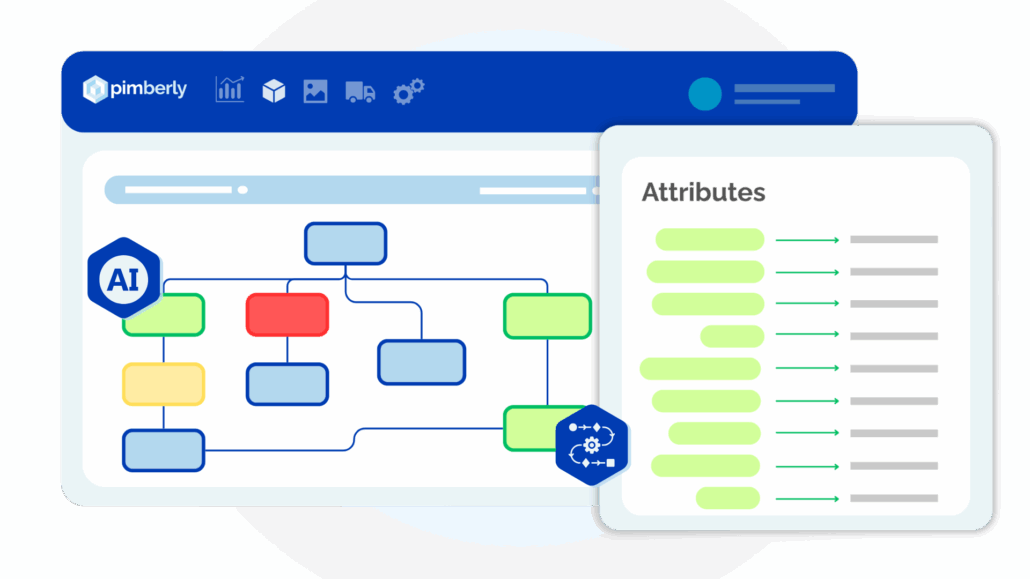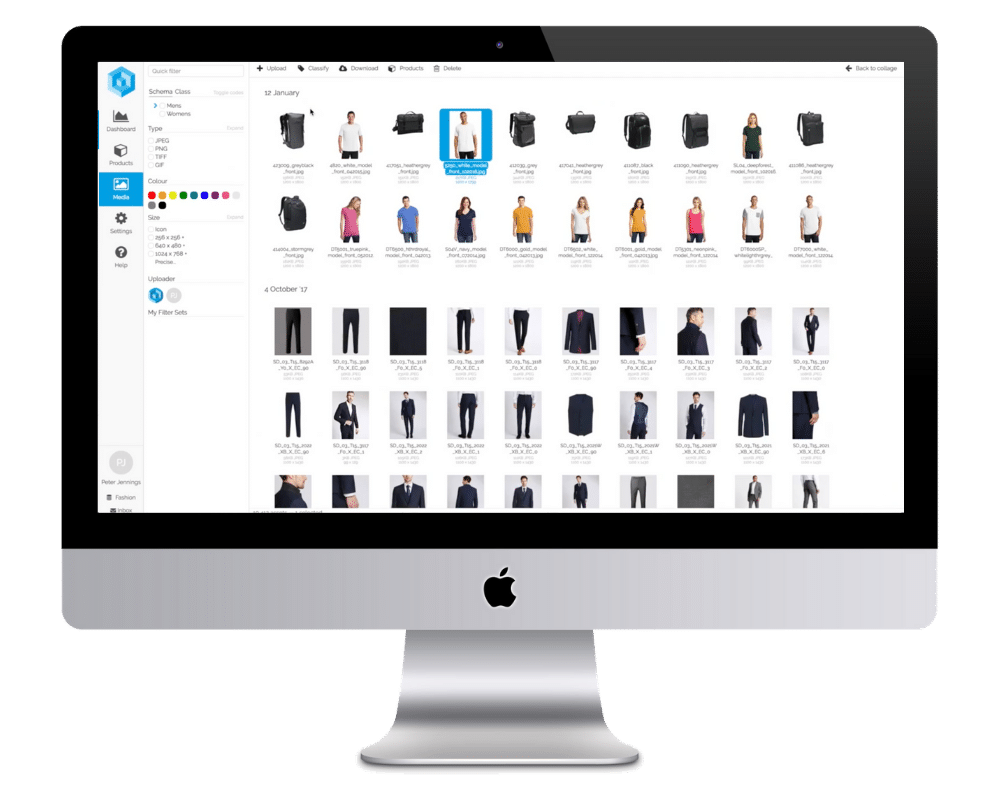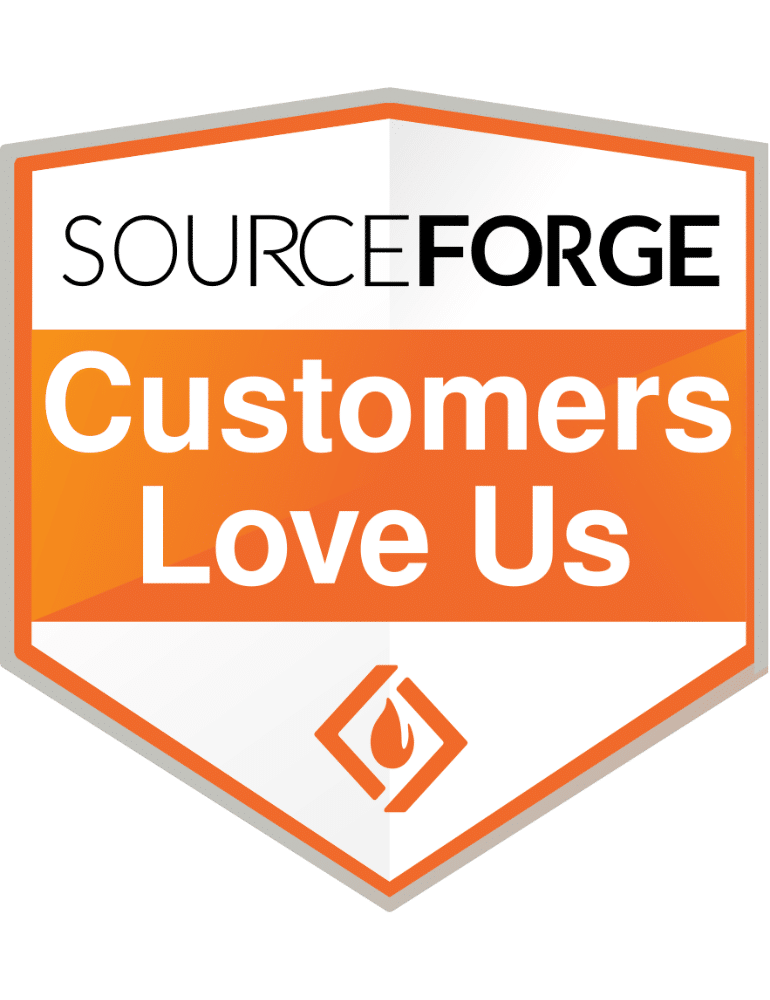Key Takeaways

- eCommerce in 2026 will be defined by AI-first shopping, new compliance requirements, and richer product experience expectations.
- Teams must prepare by strengthening product data operations, adapting to new discovery channels, and automating content workflows.
- Early preparation leads to faster product launches, higher conversion rates, and more resilient omnichannel strategies.
What Does Preparing for 2026 eCommerce Involve?
Preparing for 2026 eCommerce means building the systems, processes, and product information foundation your organization needs to succeed in a more automated, regulated, and AI-driven marketplace. This includes:
- Anticipating new AI discovery behaviors
- Meeting upcoming regulations like the Digital Product Passport
- Building transparency and sustainability into product storytelling
- Enhancing product content for multimodal search
- Scaling data operations to accommodate more channels
- Improving internal workflows for speed and accuracy
Instead of reacting to change, forward-thinking businesses are proactively designing their eCommerce operations to thrive in the next phase of digital growth.
Use Cases

Organizations preparing for 2026 eCommerce are already engaging in activities such as:
- Overhauling their product attributes to support machine-readable data
- Implementing AI-generated product descriptions to keep up with channel volume
- Conducting sustainability and materials audits
- Consolidating product information that currently lives in spreadsheets or isolated team folders
- Preparing digital assets for emerging shopping channels, such as AI-driven marketplaces
- Re-platforming outdated eCommerce systems to support faster product updates
Each of these actions helps eliminate friction and ensures businesses can adapt as the eCommerce environment evolves.
Why It Matters for Retailers, Manufacturers, and Distributors
Rising Complexity Across Channels
The 2026 eCommerce ecosystem will involve more complexity than ever before. Brands will need to manage:
- Traditional online stores
- Regional and global marketplaces
- AI discovery assistants
- Multimodal LLMs
- Social shopping and live commerce
- Industry-specific B2B portals
- Sustainability and compliance databases
- Each channel has distinct product information requirements—from image specifications to technical details to real-time availability. Managing these expectations manually becomes unscalable as catalogs grow.
The underlying challenge: Disconnected data sources and inconsistent product information create errors, slow down new product launches, and reduce visibility across emerging AI-powered search platforms.
Leading companies are solving these problems by centralizing and structuring product information so that every team—from eCommerce to merchandising to compliance—works from a single foundation. This approach improves accuracy, reduces manual work, and ensures product data is consistently ready for any new channel or regulatory requirement without large-scale rework.
Best Strategies to Prepare for 2026 eCommerce
1. Embrace AI-Powered Shopping and Product Discovery

AI-powered shopping will be one of the defining shifts of the 2026 eCommerce landscape. Tools like conversational search, AI product recommendations, virtual assistants, and multimodal comparison engines will significantly influence buyer decisions.
To prepare, businesses must ensure that their product data is:
- Highly structured
- Rich in descriptive attributes
- Contextualized with clear benefits
- Accompanied by complete technical details
- Consistently maintained and validated
Key Feature #1 — Structured Product Data Built for Machine Understanding
AI models depend on clarity, consistency, and detail. Businesses that fail to provide structured information risk being excluded from AI-driven recommendations entirely.
Machine-readable data includes:
- Consistent attribute naming
- Detailed materials and specifications
- Clear usage guidelines
- High-quality images and video
- Organized variant information
- Category-level attribute completeness
Use Case Example
A manufacturer with a catalog of 40,000 SKUs restructured its product data to support AI-based search behavior. As a result, AI recommendation engines were able to match products more accurately to buyer queries—such as “best low-voltage connectors for outdoor installation”—leading to increased qualified traffic and stronger conversion rates.
2. Prepare for Sustainability Regulations Such as the Digital Product Passport

One of the most concrete changes arriving in 2026 is the EU Digital Product Passport (DPP). This regulation will require brands to disclose detailed product lifecycle information, including:
- Material breakdown
- Country of origin
- Carbon impact
- Energy efficiency
- Repairability
- Recyclability
- Manufacturing transparency
Even companies operating outside the EU may need to comply if they sell into European markets or collaborate with partners who require this information.
Key Feature #2 — Centralized Sustainability and Material Data
Preparing for DPP compliance requires coordination across internal departments, suppliers, and downstream partners. Companies must gather, standardize, and maintain data that traditionally lives in PDFs, emails, supplier portals, or engineering documentation.
Centralizing this information enables:
- Rapid compliance document creation
- Faster supplier onboarding
- Increased trust with consumers and regulators
- Reduced risk of non-compliance penalties
Use Case Example
A consumer electronics brand preparing for DPP created a structured database of material composition and supply chain details. When the EU announced updates to packaging guidelines, the company was able to respond instantly—without scrambling across multiple systems or manual spreadsheets.
3. Strengthen Omnichannel Content for the 2026 Buyer Journey
As eCommerce expands beyond traditional web stores, product content must work across more surfaces and formats. This includes:
- Mobile-first product pages
- Interactive digital catalogs
- Marketplace listings with required attributes
- Social product feeds
- AI comparison tools
- Retailer-specific templates
Key Feature #3 — Content Tailored to Each Channel’s Standards
Every platform demands unique content. For example:
- Marketplaces often require length-specific descriptions and mandatory attributes.
- Social platforms prioritize video, lifestyle imagery, and short-form copy.
- B2B portals need technical specifications, installation guides, and safety data.
- AI assistants need structured data and detailed attributes to generate accurate answers.
Businesses preparing for 2026 are creating channel-specific content templates so that every product is automatically optimized for each environment.
Use Case Example
A home improvement distributor producing multiple versions of its product descriptions—technical for B2B buyers, simplified for retail marketplaces, and conversational for social commerce—saw improved conversion rates across every channel and a dramatic reduction in customer service questions.
4. Automate New Product Introductions (NPIs) for Faster Growth
In 2026, consumers and procurement teams expect products to appear online quickly, with complete information at launch. Manual NPI processes are too slow to handle increasing channel demands and the need for real-time updates.
Key Feature #4 — Automated Workflows, Attribute Validation, and AI Content Generation
Automation is essential for scaling:
- AI-generated product descriptions
- Auto-tagged digital assets
- Category-driven attribute rules
- Automated completeness checks
- Role-based approval workflows
- Bulk editing tools for large catalogs
Use Case Example
A retailer that previously took 10–14 days to publish new products reduced its launch time to under 72 hours by implementing automated data validation and AI copy generation—unlocking faster revenue capture during peak seasons.
5. Upgrade Your Tech Stack for Scalability and Long-Term Resilience

Preparing for 2026 eCommerce requires technology that can adapt to new channels and regulatory changes without creating operational bottlenecks.
Key Feature #5 — API-First Architecture and Modular Systems
Future-ready eCommerce operations include:
- Flexible APIs for real-time data sharing
- Tight integration between ERP, eCommerce, asset management, and product data systems
- Ability to update product information instantly across all channels
- Scalable structures that support multi-brand or multi-region expansion
- Tools that accommodate AI enrichment and automated workflows
Use Case Example
A multibrand retailer migrating off an outdated eCommerce platform adopted an API-first system that enabled real-time pricing, automated content updates, and seamless integration with its inventory management tools. These changes provided the agility needed to support new sales channels and emerging AI-powered experiences.
Preparing for 2026 eCommerce and PIM: Why Product Information Matters
Everything needed to succeed in 2026—AI visibility, compliance, omnichannel growth, automation, and scalability—depends on product information. Without clean, centralized, structured data, teams struggle with inconsistent content, slow launches, and reduced discovery across new channels.
Strong product information enables:
- Faster product introductions
- Better discoverability in AI and search engines
- More accurate, personalized recommendations
- Smoother compliance with sustainability regulations
- Richer product storytelling and customer experiences
- Lower return rates and improved buyer confidence
A future-ready eCommerce strategy begins with getting product information right.
FAQs
Q: What makes 2026 different from previous eCommerce shifts?
2026 represents the convergence of multiple large-scale transformations at once: AI-driven shopping, new sustainability regulations, more channels, and deeper consumer expectations for product transparency. Together, they demand more structured data and operational maturity than past eCommerce cycles.
Q: What’s the biggest risk of not preparing early?
The major risk is falling behind in visibility. If your product data isn’t structured for AI or compliant with new regulations, your products will simply be excluded from key search and discovery experiences—reducing traffic and slowing revenue growth.
Key Takeaways for Businesses Preparing for 2026 eCommerce
Preparing for 2026 eCommerce is less about reacting to new trends and more about building a strong product data foundation that supports long-term growth. Businesses that centralize information, embrace automation, prepare for sustainability reporting, and modernize their technology stack will be positioned to thrive as eCommerce becomes more complex—and more rewarding.













